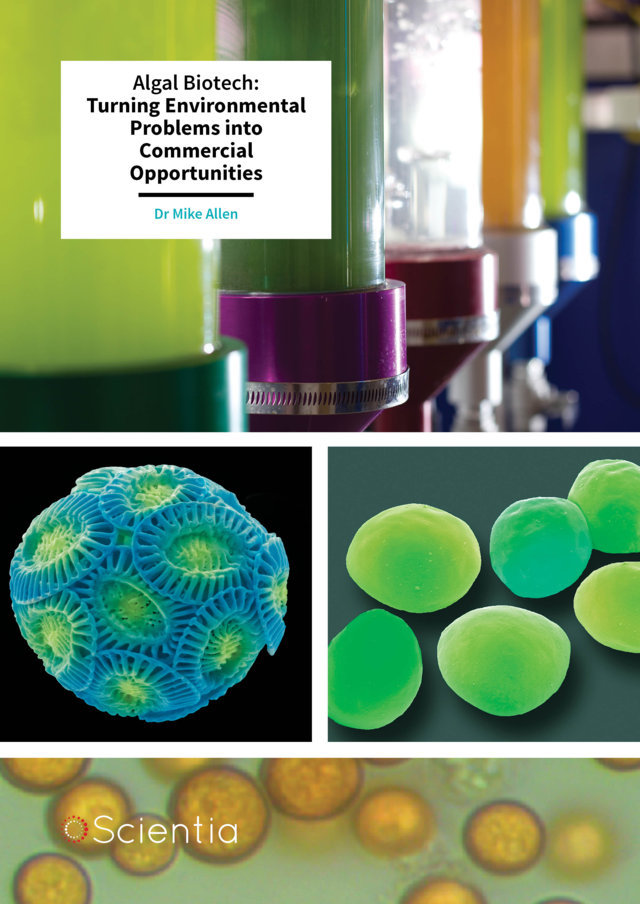Dr Mike Allen – Algal Biotech: Turning Environmental Problems into Commercial Opportunities
With over a decade of experience in producing solutions for industry, Dr Mike Allen of Plymouth Marine Laboratory (PML) is a shining star in the field of algal biotechnology. Inspired by the natural environment, he and his multidisciplinary team work to engineer and exploit algae in investigations that span the entire scale spectrum: from genetically modifying individual microscopic cells, through to producing products at pilot plant level.
Biotechnology is one of the fastest-growing sectors in the world, promising solutions to many of today’s problems, such as water contamination, food production and the urgent need for fossil fuel alternatives. Solving these problems requires a multidisciplinary approach, combining the expertise of biologists, chemists, physicists and engineers, among others. Crucially, it also requires solutions that span the entire scale spectrum: from individual microscopic cells, through to pilot plant level, tackling issues relevant for industrial application.
Advances in the study of single algal cells combined with genetic engineering may soon also be helping to solve environmental problems, in tandem with the generation of a range of high-value chemicals, biofuel, fertiliser and animal feed.
Algal Genomics
In 2016, over a decade of genomic research on microalgal coccolithoviruses (large viruses of single-cell algae) culminated in Dr Allen’s team and the University of Exeter opening a state-of-the-art environmental Single Cell Genomics (eSCG) facility. Here, the genomes of individual cells and viruses can be studied without the need for usual culturing procedures. ‘Working with single cells is incredibly powerful as a research tool,’ Dr Allen says. ‘It allows us to deconstruct complex communities and look at the individual components without the background ‘noise’ we usually get from mixed populations.’
The equipment is housed within an ultraclean room, because even a single dust particle could interfere with the results. The facility houses highly-sensitive and accurate technologies, such as cell sorting equipment, liquid-handling robotics and the world’s fastest atomic force microscope. Dr Allen’s colleague, Dr Ben Temperton of the University of Exeter, likened it to switching from using binoculars to the Hubble telescope to study stars. It enables scientists, for example, to look at individual DNA strands on a screen. At the new facility, isolated cells of marine microorganisms are being characterised, to find out what they are doing and how they are doing it.
In a paper in the journal Viruses in 2017, Dr Allen and his colleagues at PML, in collaboration with scientists from the USA and Norway, compared the genomes of different coccolithoviruses. This research confirmed the idea that viruses play a central role in the transfer of genetic information among different life domains, and that viruses exert a great influence on nutrient and energy cycles in the oceans. The PML team has sequenced the genomes of dozens of algal, virus, bacterial and fungal strains in recent years. In so doing, they have begun to bio-prospect – unlocking the secrets that these genomes harbor that make them unique. For example, they identified a new intein from a virus, a useful synthetic biology tool that can be used to aid genetic manipulation, protein expression and the screening and manufacture of new pharmaceuticals.
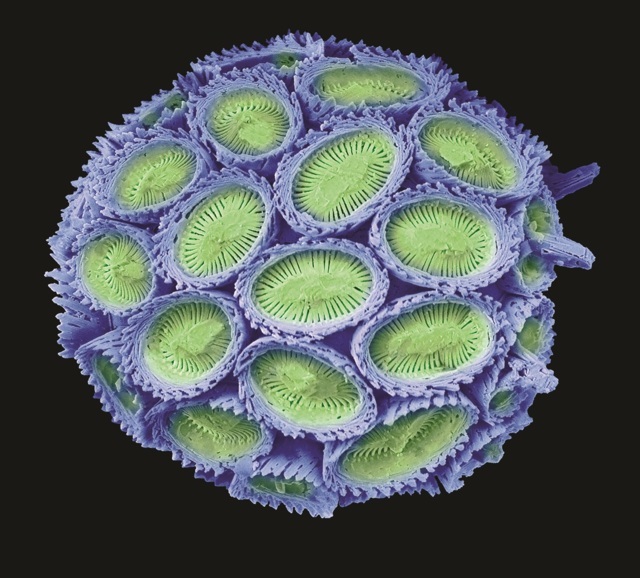
To complement this laboratory work and aid bio-prospecting from the natural world, Dr Allen led a team to develop an improved means of sampling the marine environment using low-cost remotely operated vehicles. The innovative method preserves natural environmental mRNA in situ, thereby better conserving the transcriptional profile so that it can be more accurately characterised back in the lab. ‘By combining cutting edge field and laboratory analysis techniques, we lay a solid academic foundation on which we can build our biotech platforms’ says Dr Allen ‘It’s this knowledge and understanding that provides the insight on processes that is crucial when it comes to exploitation.’
Genetically Modified Microalgae
Dr Allen’s team works with several strains of Genetically Modified (GM) microalgae, with the aim to cost-effectively produce compounds of commercial relevance. These strains are developed in house, or in collaboration with key partners from the academic and commercial sectors. For instance, a species of marine diatom (a type of single-celled algae with a distinctive silicon-based cell wall) accumulates an omega-3 fatty acid called eicosapentaenoic acid (EPA) which is a valuable nutraceutical. To ‘improve’ the omega-3 fatty acid profile, the team, in collaboration with Rothamsted Research, exploits genetically engineered strains of the marine diatom. The researchers used GM techniques to help the strain produce both EPA and docosahexaenoic acid (DHA), which can then be used as alternative source to feed fish or even replace fish oils in dietary supplements. They concluded that their best transgenic strain (‘Pt_Elo5’) could become a versatile industrial platform for the production of bespoke omega-3 formulations.
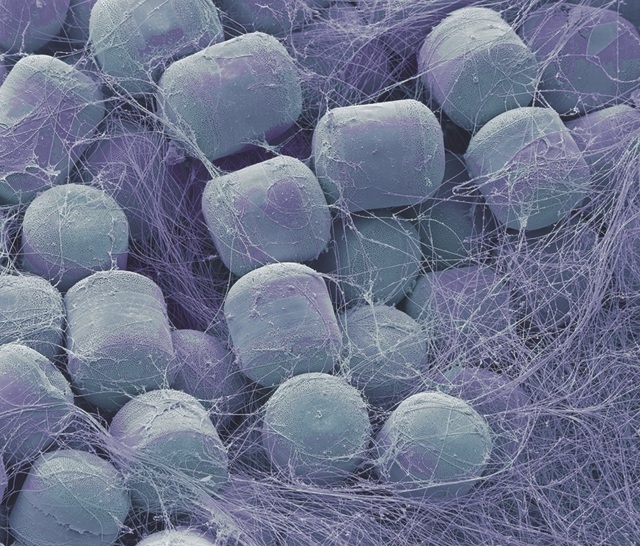
The use of genetic engineering is opening up new avenues within the emerging algal biotech industry. Not just limited to producing valuable compounds, Dr Allen’s team are also developing strains that are more amenable to downstream processing. ‘One of the biggest issues in algal biotechnology is getting rid of all the water so that you can do something with your biomass, that’s why developing downstream processing technologies is a key part of our technology portfolio,’ he tells Scientia. ‘GM provides an interesting option to let the biology help us with these engineering obstacles. In addition, the commercial viability of future products derived from genetically modified microalgae will require combining the production of high-value chemicals – such as β-carotene or omega-3 fatty acids – with low-value biofuels, fertilisers or animal feeds in a biorefinery approach.’
Dr Allen and his colleagues are today culturing transgenic algal strains in closed-system photobioreactors (PBRs) and contained raceway-pond systems. These systems can provide biofuels and high-value chemicals, offering a range of sustainable alternatives to non-renewable resources. In the future, genetically modified algae will need to be deployed on a large scale, potentially combining bio-remediation with a production function, with close attention being paid to environmental risk assessment in all cases. ‘The potential for GM algae based solutions is enormous,’ says Dr Allen. ‘Despite the current unease in public opinion surrounding their use, with all the problems we’re facing in the coming century, not exploiting them will simply not be an option. But we need to make sure we take a responsible approach.’
In a review article in the journal Algal Research in 2017, Dr Allen and two colleagues summarised the state-of-the-art for the biotechnological exploitation of GM strains of microalgae, with an emphasis on their safety with regard to the environment and human health. They concluded that the substantial knowledge base and expertise within existing aquaculture, fermentation and algal biotech industries could be combined and applied to ensure safe use of GM algae in the future.
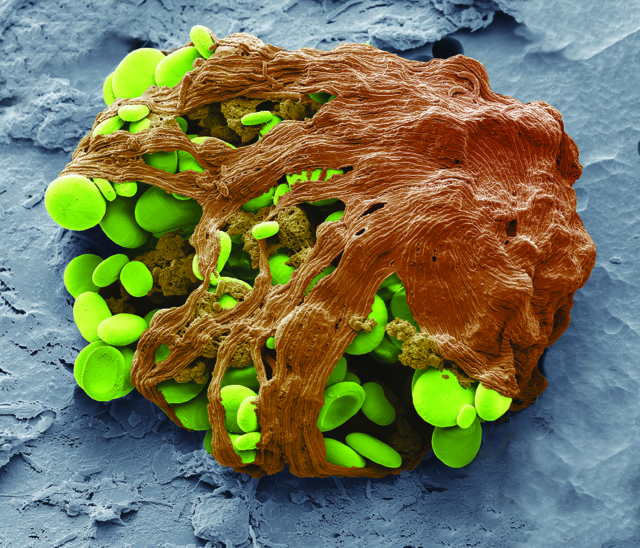
Bioremediation and Water Sanitation
Algae have considerable potential to clean up contaminated water. In 2014, Dr Mike Allen and his team at PML, in collaboration with GW4 Alliance Universities (Bath, Bristol, Cardiff and Exeter), the Coal Authority and Veolia, demonstrated the use of microalgae to recover valuable heavy metals from polluted water in an abandoned Cornish tin mine. ‘Commercial opportunities are everywhere – we pride ourselves on being able to see them when they arise,’ says Dr Allen. ‘By making the clean-up process pay for itself, we can improve both the health and the environment of millions of people around the world.’ The challenge lies in bringing the right algae into contact with the pollutants and then recovering both algae and pollutant in an energetically efficient manner. It requires matching the biology to the engineering – an approach Dr Allen’s team has taken time and time again.
Sometimes the R&D path can take some unexpected routes. One technology that Dr Allen’s team has pioneered is the vortex bioreactor, a system based on vortex separation systems already used by many industries. ‘We aim to convert microalgae into biodiesel and harvest in a one-step, one-pot process,’ he explains. ‘It’s ambitious, but we’re making great progress. We’ve broken it up into a series of smaller challenges and are meeting each one.’ One such challenge involved using the vortex bioreactor for membrane disruption, so that cellular lipids would become available for conversion into biodiesel. Dr Allen’s team used E.coli for their initial trials and quickly realised they were on to something big.
Working with The Bill and Melinda Gates Foundation, the PML researchers developed the vortex bioreactor as a simple, low-cost technology for sterilising waste water. ‘What started out as a technology to help convert microalgae into biofuels, spun off (quite literally) in the direction of global waste water sanitation,’ comments Dr Allen. The technology exploits a continuous vortex within a pipe that brings water-borne pathogens into contact with a biocidal agent embedded in seaweed extract (in this instance copper). The team’s prototype vortex bioreactors have been successfully trialled in India to TRL7, and the technology is being made freely available for humanitarian applications worldwide.
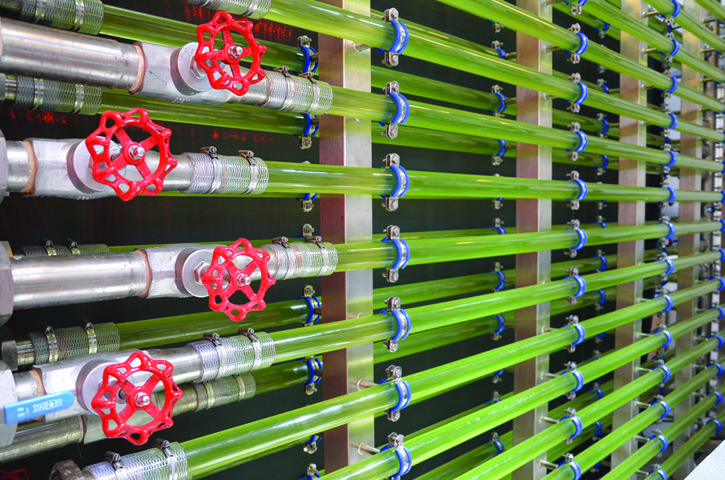
Exploiting Harmful Algal Blooms
Algae can be a major environmental problem, especially bloom-forming microalgae, which can be a source of toxins harmful to people and wildlife. Dr Allen and his colleagues are investigating methods for exploiting algal blooms, which combine environmental remediation with subsequent bioprocessing. Their approach involves utilising biological agents such as viruses, bacteria or other algae to inhibit or control bloom development, and combining this with biomass removal in order to prevent the cycle repeating. The researchers at PML envisage harvesting algal blooms as a resource, to make biofuels and other products in a cost-effective manner that could self-finance environmental clean-up operations.
Algae are known to accumulate lipids that resemble crude oil – indeed, crude oil is largely the product of fossilised algae. Dr Allen and his collaborators at Bath University have pioneered an approach for obtaining useful bio-oil from algal cells. ‘The process being developed is known as hydrothermal liquefaction, which converts organic material into four phases: a bio-oil, an aqueous phase rich with phosphate and nitrate, an inert char containing stable metals, and a gas – mostly carbon dioxide,’ explains Dr Allen. ‘It does this using water as a solvent and through the application of high pressures and temperatures. I like to call this “geology-in-a-tin”, as it mimics the natural events of millions of years ago that originally converted dead organisms into the oil we extract from wells today.’
Hydrothermal liquefaction can be applied to any type of algae. For instance, cyanobacteria (blue-green algae) accumulate several chemicals of potential commercial interest. In a study published in Bioresource Technology in 2016, Dr Allen’s team, in collaboration with the University of Bath and the University of Natural Resources and Life Sciences in Vienna, describes how they employ hydrothermal liquefaction to convert cyanobacteria into propylene (a plastic precursor) and a bio-oil suitable for advanced biofuel production.
Turning Algae and Plastic Waste into Oil
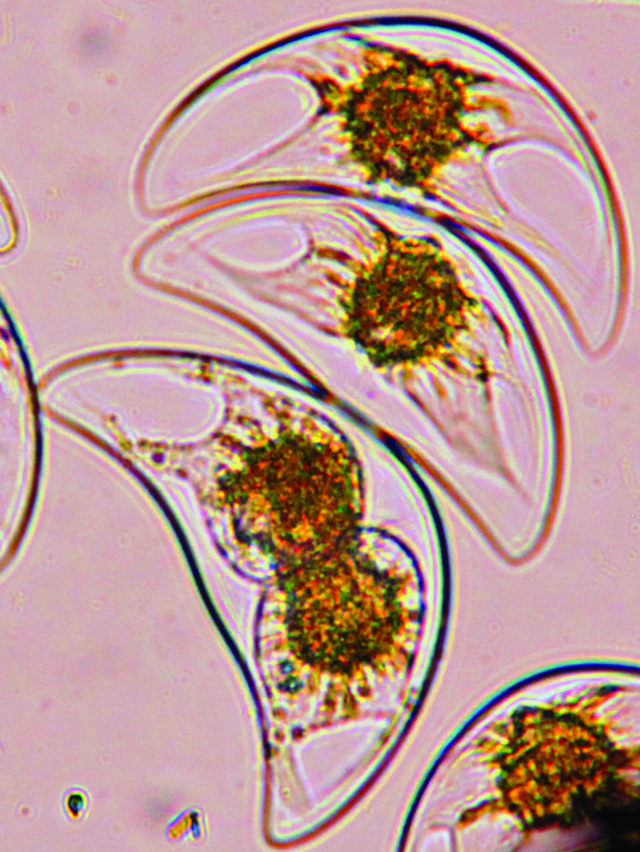
Whilst future plastic production will be hindered by dwindling crude oil supplies, plastic waste is currently a major environmental problem. During a family walk on a litter-strewn beach, Dr Allen wondered whether the combined mess of seaweed and plastic debris could be turned into biofuel and fertiliser in one process. ‘We had already managed to produce oil
from algae in the laboratory and we know we can do the same with plastics,’ says Dr Allen. With Dr Chris Chuck at the University of Bath, Dr Allen and his colleagues are adapting their hydrothermal liquefaction process to convert marine algae and plastic debris into bio-oil, thereby turning a problem into a commercial opportunity.
In a report in Faraday Discussions in 2017, in collaboration with the Vietnam Academy of Sciences and Technology, the team reported how complex and variable organic feedstocks, including algae, can best be valorised using flexible anaerobic fermentation and hydrothermal processes within an integrated biorefinery concept. They concluded that not only is there no need to separate out plastic detritus from the organic matrix prior to processing, but the plastic itself can actually improve the economic viability of the process. ‘The versatile process can be applied at specific beaches, open ocean gyres accumulating debris, and at sites of harmful algal blooms,’ notes Dr Allen.
Based on this approach, fast-growing algae could also be specifically cultivated to prevent excessive nutrient run off into rivers and seas (thereby preventing/mitigating HAB formation), produce oils for biofuels, high-value chemicals and other useful products (such as fertilisers for crop production) in biorefineries in a sustainable manner. To optimise the production of biofuels and other products, genetic engineering may end as a key component in the process, for example, to obtain higher yields of more valuable products without detrimentally slowing algal growth or performance.
Meet the researcher
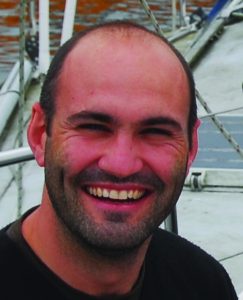
Dr Mike Allen
Plymouth Marine Laboratory
Plymouth
UK
Dr Mike Allen is a Microbial Biochemist at Plymouth Marine Laboratory (PML), where he has worked since 2004. He is also an Honorary Fellow and Visiting Professor at the College of Life and Environmental Sciences at the University of Exeter and an Honorary Fellow of the School of Physics at Bristol University. After gaining his BSc from the University of Wales, Cardiff, he was awarded his PhD by Cardiff University in 2004. His ‘blue skies’ research focuses on understanding the role of viruses in the oceans using genomic, proteomic and other approaches. Applied projects include biofuel production and processing, water sanitation, and the development of novel bioreactor technologies for generating, harvesting and processing microalgae.
CONTACT
T: (+44) 1752 633454
E: mija@pml.ac.uk
W: www.pml.ac.uk/People/Science_Staff/Dr_Mike_Allen
KEY COLLABORATORS
Dr Chris Chuck, University of Bath
Prof Johnathan Napier, Rothamsted Research
Dr Ben Temperton, University of Exeter
Prof Tom Scott, University of Bristol
Prof Stavroula Balabani, University College London
Dr Andrew Spicer, Algenuity
Mr Paul Goddard, PGA Ltd
FUNDING
Innovate UK
NERC
BBSRC
The Bill and Melinda Gates Foundation
The Roddenberry Foundation
REFERENCES
TA Beacham, JB Sweet and MJ Allen, Large scale cultivation of genetically modified microalgae: A new era for environmental risk assessment, Algal Research, 2017, 25, 90–100.
JI Nissimov, A Pagarete, F Ma, S Cody, DD Dunigan, SA Kimmance and MJ Allen, Coccolithoviruses: A Review of Cross-Kingdom Genomic Thievery and Metabolic Thuggery, Viruses, 2017, 9, 52.
M Coma, EM Hernandez, F Abeln, S Raikova, J Donnelly, TC Arnot, M Allen, DD Hong and CJ Chuck, Organic waste as a sustainable feedstock for platform chemicals, Faraday Discussions, 2017, Accepted Manuscript. DOI: 10.1039/C7FD00070G
N Cagney, T Zhang, R Bransgrove, MJ Allen and S Balabani, Effects of cell motility and morphology on the rheology of algae suspensions, Journal of Applied Phycology, 2017, 1–13.
S Raikova, H Smith-Baedorf, R Bransgrove, O Barlow, F Santomauro, JL Wagner, MJ Allen, CG Bryan, D Sapsford, CJ Chuck, Assessing hydrothermal liquefaction for the production of bio-oil and enhanced metal recovery from microalgae cultivated on acid mine drainage, Fuel Processing Technology, 2016, 142, 219–227.
M Hamilton, J Warwick, A Terry, MJ Allen, JA Napier and O Sayanova, Towards the industrial production of omega-3 long chain polyunsaturated fatty acids from a genetically modified diatom Phaeodactylum tricornutum, PLoS One, 2015, 10, e0144054
S Atkinson, SF Thomas, P Goddard, RM Bransgrove, PT Mason, A Oak, A Bansode, R Patankar, ZD Gleason, A Whitesell and MJ Allen, Swirl Flow Bioreactor coupled with Cu-alginate beads: A system for the eradication of Coliform and Escherichia coli from biological effluents, Nature Scientific Reports, 2015, 5, 9461.


